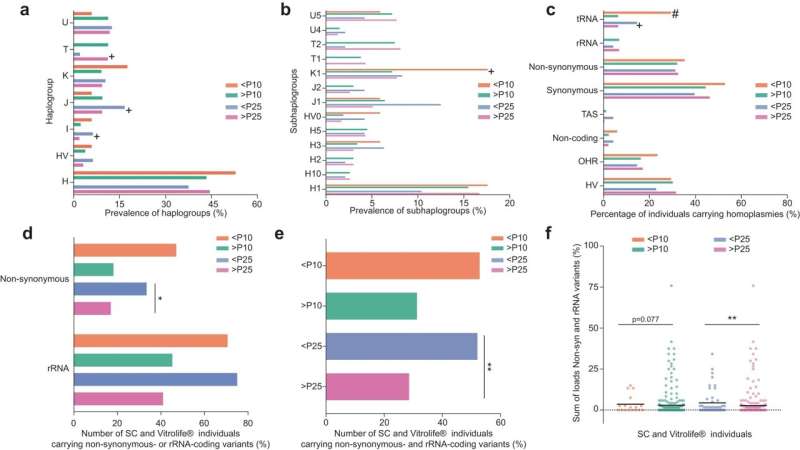This article has been reviewed according to Science X's editorial process and policies. Editors have highlighted the following attributes while ensuring the content's credibility:
fact-checked
trusted source
proofread
Research team discovers genetic cause of low birth weight among children conceived after fertility treatment

VUB professor Claudia Spits, of the Vrije Universiteit Brussel Reproduction and Genetics research group, has identified a genetic cause for the increased risk of low birth weight in babies born following assisted reproductive technologies such as IVF.
"Previous studies have identified treatment-related causes for low birth weight, but this is the first time we have been able to identify an underlying genetic factor," says Professor Spits. She organized a large-scale study with Brussels IVF (the center for reproductive medicine at UZ Brussel), the center for medical genetics (CMG) at UZ Brussel and Maastricht University Medical Center (UMC).
The paper is published in Nature Communications.
Initially, she studied the DNA of babies born both from spontaneous pregnancies and after fertility treatment. She found that in both groups, a greater risk of low birth weight was associated with certain mutations in mitochondrial DNA, and that these mutations were slightly more common in children born after fertility treatment.
Mitochondria are the "energy factories" in the cell that are inherited through the mother. If they do not function properly, as they develop, they can cause a variety of health problems such as cardiovascular disease and diabetes.
To determine whether these mutations are transmitted from mother to child, the researchers also studied the DNA of the mothers. Analysis showed that children born after fertility treatment have more new, non-transmitted mutations than babies conceived without assistance.
As a final step, the group studied oocytes obtained through hormonal stimulation and through natural cycle, to determine whether hormonal stimulation was harmful. The mitochondrial mutations did not necessarily appear to be caused by hormonal stimulation. "In particular, a combination of age-related factors in conjunction with hormonal stimulation can lead to a higher risk of abnormal oocytes," says Spits.
"The risk of mutations in the oocyte's mitochondrial DNA increases with age. During a normal cycle, mechanisms exist to remove mutated oocytes and select only healthy cells. However, with hormonal stimulation to boost oocyte production, this mechanism is switched off and mutated oocytes are released."
Spits's team will conduct further studies, but these insights can be immediately implemented in assisted reproductive technology (ART) treatments to limit the risk of oocytes with mutagenic mitochondria.
"It appears that the larger the number of oocytes obtained after hormonal stimulation, the higher the chance of mutations. In the future, we can pay more attention to achieving a proper balance between an adequate oocyte yield and minimizing the risk of mutations," Spits concludes.
More information: Joke Mertens et al, Children born after assisted reproduction more commonly carry a mitochondrial genotype associating with low birthweight, Nature Communications (2024). DOI: 10.1038/s41467-024-45446-1




















